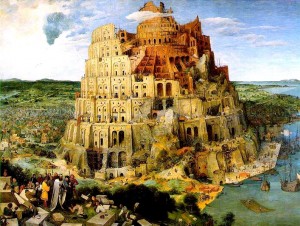Last year we witnessed several incredibly significant developments in the field of machine translation, including an instant telephone translation service from NTT DoCoMo, Japan’s largest mobile phone operator, and a pair of augmented reality glasses that can perform real-time language translation, invented by Oxford graduate Will Powell.
Last November Microsoft unveiled its impressive instant voice translation tool, demonstrated by chief research officer Rick Rashid at a conference in Tianjin in October, which translates speech almost instantly into another language while retaining the characteristics of the speaker’s own voice. This remarkable technology was demonstrated by Mr Rashid when he used the instant translator to translate his speech into grammatically correct Chinese, and then played the sentences back to the audience using his own natural voice features.
How did Microsoft achieve this result? Instead of using the customary ‘pattern matching’ approach, they focused their attention on a technique known as ‘Deep neural networks’ – a technique inspired by human brain behaviour. While Microsoft’s voice recognition tool is not yet perfect, it is a promising development in the field of machine translation, proving that a universal translation device may not so far off after all.
Level of near-perfection
The question is, how do these significant developments affect companies and why is it important for businesses to embrace machine translation?
It is no secret that machine translation has come a long way in recent years, but these developments indicate that MT is approaching full launch and could potentially reach a level of near-perfection in a matter of four or five years. Corporate growth is dependent on multilingual content and machine translation can offer enormous benefits to companies willing to embrace cutting-edge technology, the obvious advantages being reduction in costs, time and labour.
As translation technology becomes ever more advanced and reliable, companies will begin to realise that they cannot avoid machine translation. The main drawback to machine translation, that being a perceived lack of accuracy, will sooner or later be eliminated as companies develop more and more advanced methods of translating both spoken and written material.
Naturally many are worried about the impact such technology could have on employment in the translation industry, but the reality is that we are experiencing a revolution in translation technology and, sooner or later, companies will realise that using machine translation will allow them to provide clients with accurate information in multiple languages in a matter of seconds. The days of inaccurate, and often amusing, Google translations are over, and we are now facing a breakthrough in the way multinational corporations do business.
Rachel Robertson
Technology and automation, if wisely used, help companies to improve their efficiency, reduce turnaround time and cut costs without compromising the quality of the output. It facilitates the translation process amplifying the range of services offered and permitting a higher level of localization and delivery of the content in multiple languages.
Transenter offers you MT-lingo: a Machine Translation solution, which involves building an online MT interface. Unlike free online translation tools, this secure and customized MT solution can build on corporate terminology and industry glossaries, and may be integrated within the company’s infrastructure. Read more!














